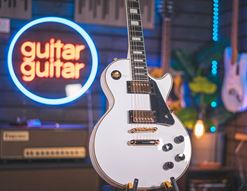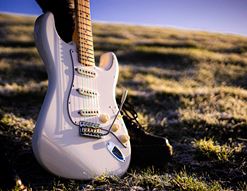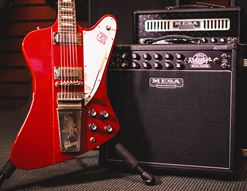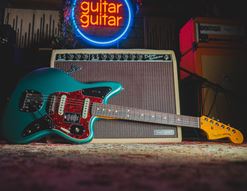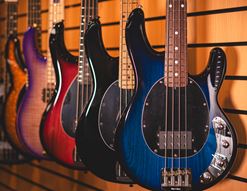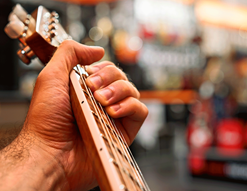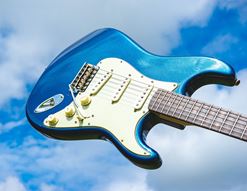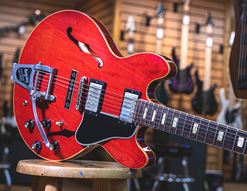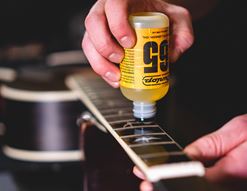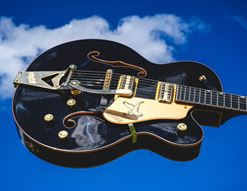It’s time for your first Martin guitar. How exciting! Martin are one of the most iconic acoustic guitar makers on the planet, and owning one of their instruments feels like a step into the big leagues for any player.
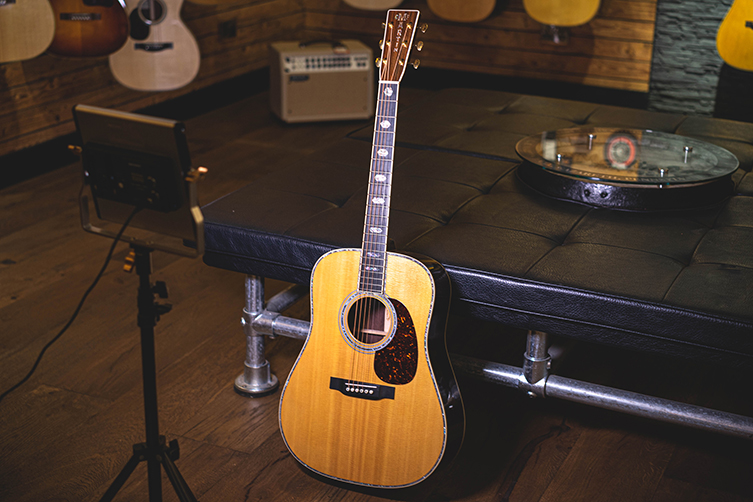
You might be looking for a guitar to take out to gigs with you, or maybe you want something to enjoy in the house? This may be your first ‘proper’ acoustic or it could be time for a lifelong guitar companion. Whatever you need, Martin offer a wide range of models, so today I’d like to walk you through some possibilities. From spending years selling Martins to a diverse range of customers, to now writing regularly about them, I feel that I’m in a good position to advise on this. I’ll look at a number of price points, but since I’m discussing your first Martin purchase, I’ll be erring on the more affordable side of the price spectrum.
Is that kettle boiled? Good, make yourself a cup and lets do this!
Contents
Martin Road Series 000-10E Spruce Special
Things to Consider
I think the first thing to do is to figure out your needs and priorities. What sort of styles (generally speaking) do you want to be playing? Do you have any sonic preferences? The differences in sound between different models can be subtle to the untrained ear, but different tone woods definitely sound and react in their own unique ways, and you’ll want to take advantage of that. Let’s take each of these things in turn:
- Purpose: What do you intend to do with your guitar? If you want to perform live, you’ll need a pickup system. If you want to play the full range of available notes, you may need a design with a cutaway in the body (where the body shape is sculpted away at one side to let your hand reach those high-up notes). If you play only at home, a smaller body will generally be less loud, so that could be a consideration.
- Playing style & Physicality: There is quite a difference in size between even a 000 model and a dreadnought (two of Martin’s main guitar sizes), and this affects both sound and physical handling. Put simply, you need to be able to ‘manage’ the instrument comfortably, so if the size is either too large or too small, you won’t have the best playing experience. If you want to mainly strum chords, a bigger body (such as a dreadnought) will give you a larger sound that will mesh the notes together. If you like to play melodies and fingerpicked parts, a smaller shape such as a 000, an OM or a parlour may suit you best since the note separation will be clearer. Some shapes, as we will see, sit in between these extremes.
- Sound Goals: Spruce and mahogany (and its variants such as sapele) are likely to be the ‘top’ woods you’ll come into contact with most often. The guitar’s top plays the largest part in determining the overall sound of the guitar. Spruce sounds brighter and tighter, whereas mahogany sounds warmer and slightly looser in response. Neither is better, but you’ll likely form a preference for one over the other.
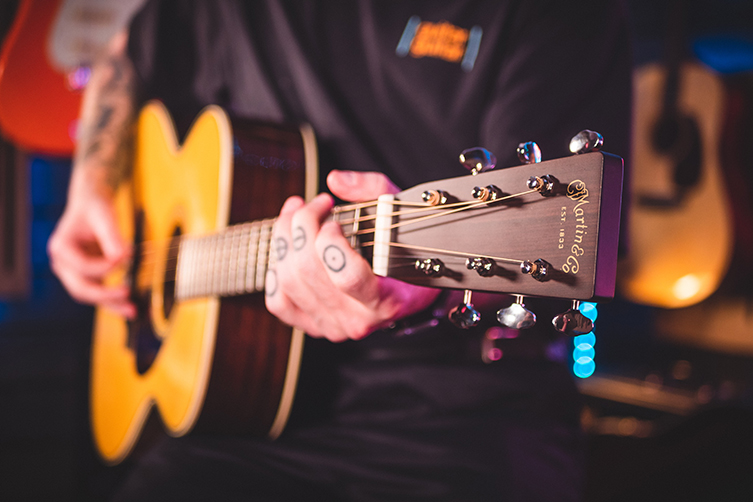
The Guitars
Now that you’ve had a think about those elements - purpose, playing style and sonic goals - we can move forward and check out some models with a slightly more critical eye. The guitars I’m looking at today will all conform to specific uses, but there will undoubtedly be variations on each model too, so it’s worth taking in all of this info and then checking out the entire ranges: you may love a certain body shape but prefer a different tone wood, for example: it’s likely that Martin offer what you want, so do have a good look!
Anyway, here are my recommendations for you…
Martin X Series GPC-X2E
My first choice is a great all-rounder that also comes in at a pretty wonderful price. The Martin X Series GPC-X2E ticks a lot of boxes for a lot of performers, from its Grand Performance body (Martin’s take on the contemporary style favoured also by Takamine and Taylor) to its cutaway and pickup system.
Going further in, I’d say that the Grand Performance body is the ideal middle ground between the smaller OM/Orchestral size and the larger dreadnought. It’s a modern look for sure, but only particularly retro-leaning players will have an opinion on that: most of us will simply see a good looking Martin.
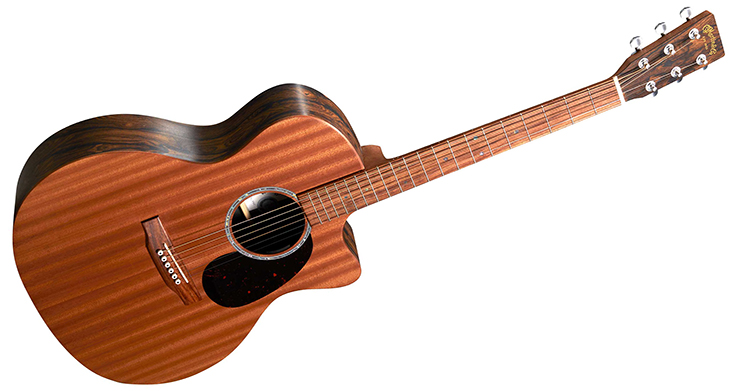
Sapele is a cousin of mahogany with similarly rich tonal properties, but it is also a far more affordable material, so its use here helps keep the price at an attractive point. The Ziricote mentioned in the specification refers to the pattern used on the back & sides, which are in fact made from HPL (High Pressure Laminate), an ecological and totally acceptable material choice at this price point.
At time of writing (July 2024), this guitar is priced a good couple of hundred quid under a grand, and it’s an attractive Martin with a pickup. It’s a great deal, and I’d say this is a perfect starting point for your search. It may even prove to be the best overall choice for you, particularly if you plan on gigging!
Martin Road Series 000-10E Spruce Special
My next choice harkens back to more traditional Martin territory. The 000 shape (called ‘triple-oh’) is a smaller bodied style. It’s actually extremely similar to the OM (otherwise known as the Orchestral model) except for the scale length: the OM has a longer scale length (25.4”, which is standard for acoustic guitars) than the 000, which has a slightly shorter 24.9” scale length.
This means that the 000 has an easier playing feel, often described as ‘more slinky’. Lots of guitarists consider the 000 body (and the OM) to be the ultimate fingerstyle player’s shape, and I’d wholeheartedly second that. The slightly smaller body is also a little shallower than a dreadnought, and the difference makes the 000 a very inviting instrument to pick up.
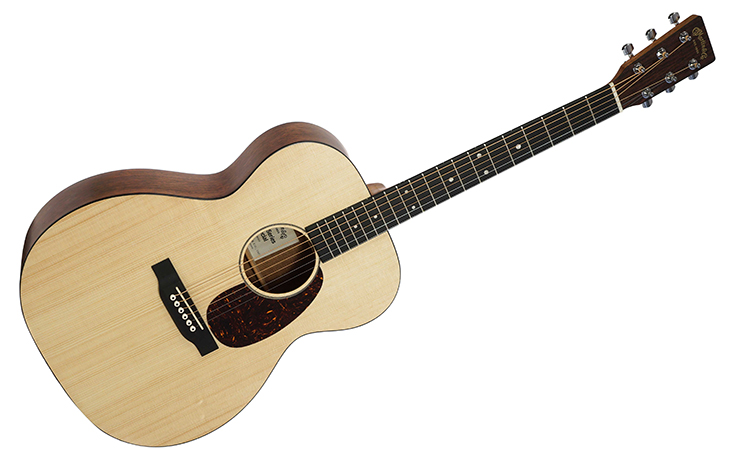
This model, the Martin Road Series 000-10E, has a spruce top and a sapele back & sides. One of the crucial differences between this guitar and the X-Series model we just saw is that this guitar is made entirely from solid timbers. There are no laminated ingredients here, and that is considered to be a big step up in quality. Solid timber resonates better and will ‘season’ more than a solid top guitar; that is, the overall sound will improve to a greater degree the more the guitar is played.
There’s also a Fishman pickup installed here (Fishman are one of the top names in the pickup business), so if you don’t require the upper fret access of the GPC model, and you like a brighter sound, then this 000 packs in a lot of value and class for the cash!
Martin D-15 Streetmaster
It would be remiss of me not to include a dreadnought in any Martin guitar roundup, and this one is particularly cool. It’s a good chunk more expensive than the other guitars I’ve selected, but I reckon the cost is justified. This guitar looks like it has stepped off the set of a Western!
‘Depression-era’ Martins are super cool and very revered: during the Depression years of the 1930s, Martin used mahogany to build a range of more affordable instruments for the struggling populace. These distinctive 15 series guitars have a look and sound of their own, and are now a recognized ‘style’ in their own right.
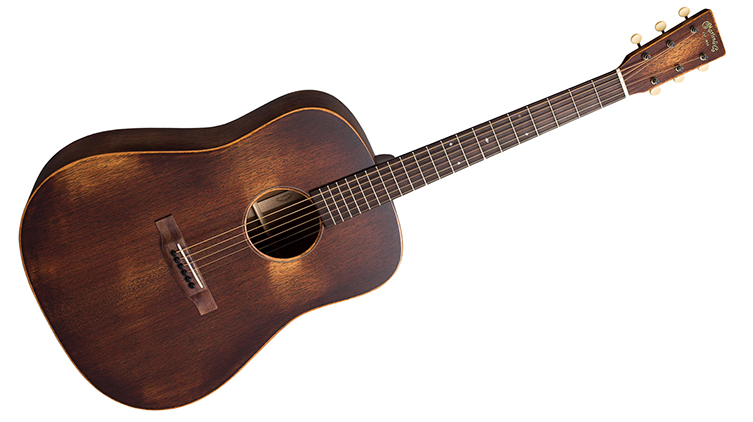
This Martin D-15 StreetMaster takes that style and adds some realistic ageing and wear to the wood for a look that’s - in my opinion at least - pretty excellent! I know that some would prefer to have the wear happen naturally, but who can really wait through 60 years of wear and tear to finally have the vibe they want from their guitar?
The 15 series already has a stripped back, utilitarian vibe, so this extra ageing befits the instrument. There’s a satin finish on there too, which helps convey the patina of age. Otherwise it’s a loud and lovely all-mahogany dreadnought with tons of projection and character.
More Martins
These three examples are all interesting, capable, quality instruments. I think you’ll enjoy them all, and in trying them, you’ll develop opinions on what you’d prefer to have as your Martin guitar. Check out the X-Series, Road Series and StreetMaster ranges for an excellent - and affordable - cross-section of what Martin do.
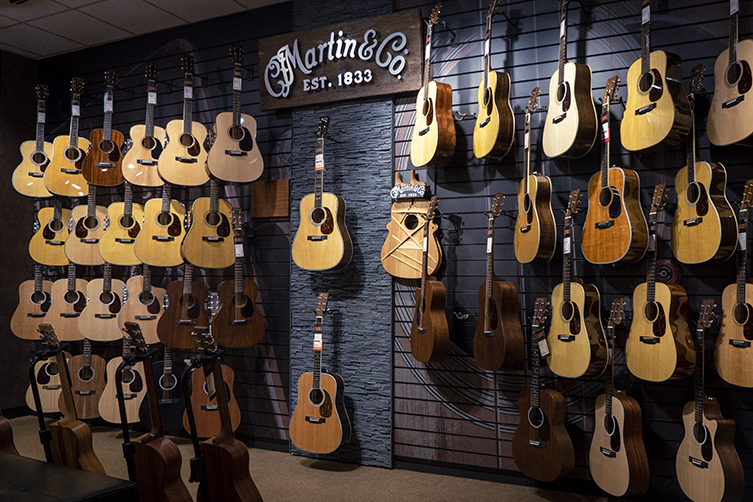
Of course, your first Martin may well be a D-28 or D-45, and if it is, then I say more power to you! But this blog assumes that you’re not going in at the top, and could do with some reference points. I hope I’ve given you that today, and invite you to explore the comprehensive ranges of Martin guitars at your local guitarguitar. Enjoy!

